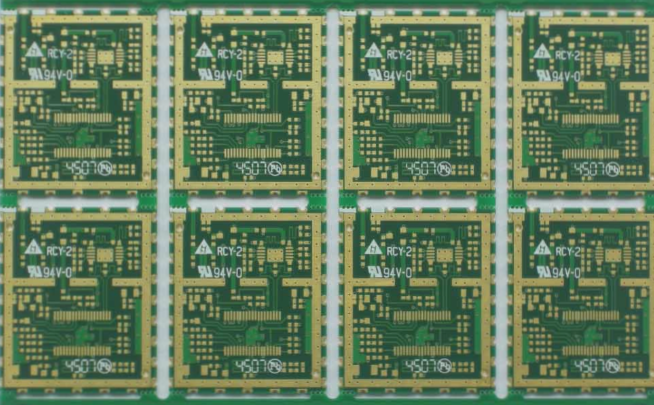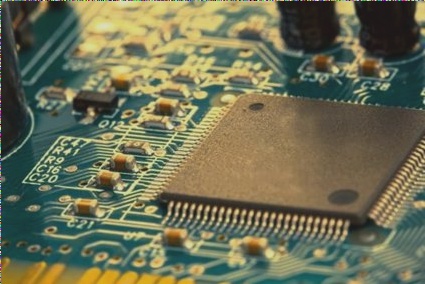One solution for designers and design teams to address these challenges is to use a combination of software and hardware design technology for printed circuit boards (PCB). Although this may not be the latest technology, the comprehensive integration of these factors demonstrates that it is universal and cost-effective. From traditional rigid PCBs connected by cables to today’s flexible and hard board technology, while the interconnection of two rigid boards and flexible cables is feasible for short-term design, it must be redone each time. Connectors installed on the boards and the need to assemble them to the circuit board and cables increase costs. Moreover, rigid PCBs connected by cables are prone to electrical false soldering, which can lead to failure. In contrast, combining soft and hard circuits can eliminate these virtual solder joints, making them more reliable and enhancing overall product quality.
Let’s delve into the total cost comparison. Figure 1 contrasts the simulation manufacturing cost of a rigid PCB with a traditional cable connection against a 3D combination of hardware and software. The traditional design uses a rigid board with flexible cables and connectors, while the soft-hard design integrates two built-in soft layers within the soft-hard board.

1. The overall structure consists of four-layer printed circuit boards. The manufacturing costs for both designs are based on the PCB manufacturer’s quotation, including assembly costs. Additionally, the cost of two separate four-layer circuit boards, connectors, and cables in traditional designs must be included.
2. It is evident from the figure that, when production exceeds 100 sets, the soft-hard combination design saves time and increases efficiency compared to the traditional design. This is primarily because the soft-hard combination circuit eliminates connector components and cables, reducing the need for connector assembly. Moreover, these designs are reliable and well-crafted, representing just the tip of the iceberg.
3. With soft-hard combination technology, designers avoid using connectors, wires, and cables to interconnect multiple PCBs in a single package. Since cable assembly is unnecessary, overall assembly costs and testing complexity are reduced, which helps lower costs. Fewer components are required, leading to a reduced bill of materials and minimizing supply chain risks and costs. This combination also makes product maintenance more convenient and cost-effective throughout the product’s lifecycle.
4. Manufacturing, assembly, testing, and logistics costs are critical factors for any project utilizing a combination of software and hardware design technology. This design approach often necessitates a mechanical team to assist with flexible design and PCB integration, which is time-consuming, costly, and prone to errors.
5. Unfortunately, PCB design tools frequently overlook the folding and assembly issues inherent in soft-hard designs. Effective combination design requires 3D thinking, as the flexible parts need to be folded, twisted, and rolled to meet mechanical design requirements. Traditional PCB design tools do not support 3D circuit board design, bending and wrinkle simulation, or layer stack definitions, including flexible parts.
6. Consequently, designers of soft-hard combinations must manually convert 3D rigid and flexible designs into flat, 2D production formats. They also need to manually record the soft design areas and carefully review to ensure no components or vias are placed between rigid and flexible areas. This process is restricted by numerous rules, many of which are unsupported by PCB design software.
7. Generally, designing a combination of soft and hard PCBs is more labor-intensive than designing standard rigid PCBs with traditional software. However, modern design tools with advanced 3D capabilities support bending definitions and simulations of flexible design parts, and layer stack definitions. These tools significantly reduce the need for mechanical CAD tools for flexible parts, saving time and money for designers and design teams.
8. By leveraging modern PCB design tools, developers and circuit board manufacturers can coordinate effectively, promoting time savings and efficiency in soft-hard technology. Compared to traditional rigid circuit boards and cable designs, the soft-hard combination requires close collaboration between designers and manufacturers. Successful rigid-flex board production depends on jointly developing design rules, such as layer counts, material choices, via sizes, and bonding methods. Appropriate design tools allow for clear definitions and trade-offs early in the design process, optimizing rigid-flex boards and further reducing costs.
9. Undeniably, industry trends and consumer demands push designers to challenge design limits and create new electronic products to meet market demands. Today’s mobile device requirements have driven soft-hard technology to the forefront of design, providing greater commercial value for applications starting with hundreds of units. Modern PCB design tools support 3D development, pre-cooperation, and all necessary definitions and simulations for hardware-software combinations, making the design process more efficient and cost-effective. Compared to rigid PCBs connected by cables, this approach is less expensive. For design teams, these choices determine the success or failure of the product.
Let’s delve into the total cost comparison. Figure 1 contrasts the simulation manufacturing cost of a rigid PCB with a traditional cable connection against a 3D combination of hardware and software. The traditional design uses a rigid board with flexible cables and connectors, while the soft-hard design integrates two built-in soft layers within the soft-hard board.

1. The overall structure consists of four-layer printed circuit boards. The manufacturing costs for both designs are based on the PCB manufacturer’s quotation, including assembly costs. Additionally, the cost of two separate four-layer circuit boards, connectors, and cables in traditional designs must be included.
2. It is evident from the figure that, when production exceeds 100 sets, the soft-hard combination design saves time and increases efficiency compared to the traditional design. This is primarily because the soft-hard combination circuit eliminates connector components and cables, reducing the need for connector assembly. Moreover, these designs are reliable and well-crafted, representing just the tip of the iceberg.
3. With soft-hard combination technology, designers avoid using connectors, wires, and cables to interconnect multiple PCBs in a single package. Since cable assembly is unnecessary, overall assembly costs and testing complexity are reduced, which helps lower costs. Fewer components are required, leading to a reduced bill of materials and minimizing supply chain risks and costs. This combination also makes product maintenance more convenient and cost-effective throughout the product’s lifecycle.
4. Manufacturing, assembly, testing, and logistics costs are critical factors for any project utilizing a combination of software and hardware design technology. This design approach often necessitates a mechanical team to assist with flexible design and PCB integration, which is time-consuming, costly, and prone to errors.
5. Unfortunately, PCB design tools frequently overlook the folding and assembly issues inherent in soft-hard designs. Effective combination design requires 3D thinking, as the flexible parts need to be folded, twisted, and rolled to meet mechanical design requirements. Traditional PCB design tools do not support 3D circuit board design, bending and wrinkle simulation, or layer stack definitions, including flexible parts.
6. Consequently, designers of soft-hard combinations must manually convert 3D rigid and flexible designs into flat, 2D production formats. They also need to manually record the soft design areas and carefully review to ensure no components or vias are placed between rigid and flexible areas. This process is restricted by numerous rules, many of which are unsupported by PCB design software.
7. Generally, designing a combination of soft and hard PCBs is more labor-intensive than designing standard rigid PCBs with traditional software. However, modern design tools with advanced 3D capabilities support bending definitions and simulations of flexible design parts, and layer stack definitions. These tools significantly reduce the need for mechanical CAD tools for flexible parts, saving time and money for designers and design teams.
8. By leveraging modern PCB design tools, developers and circuit board manufacturers can coordinate effectively, promoting time savings and efficiency in soft-hard technology. Compared to traditional rigid circuit boards and cable designs, the soft-hard combination requires close collaboration between designers and manufacturers. Successful rigid-flex board production depends on jointly developing design rules, such as layer counts, material choices, via sizes, and bonding methods. Appropriate design tools allow for clear definitions and trade-offs early in the design process, optimizing rigid-flex boards and further reducing costs.
9. Undeniably, industry trends and consumer demands push designers to challenge design limits and create new electronic products to meet market demands. Today’s mobile device requirements have driven soft-hard technology to the forefront of design, providing greater commercial value for applications starting with hundreds of units. Modern PCB design tools support 3D development, pre-cooperation, and all necessary definitions and simulations for hardware-software combinations, making the design process more efficient and cost-effective. Compared to rigid PCBs connected by cables, this approach is less expensive. For design teams, these choices determine the success or failure of the product.



